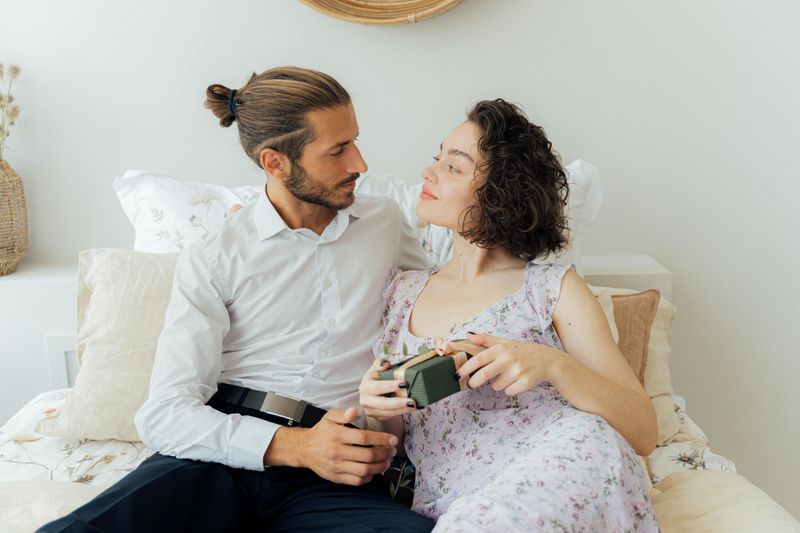9 Practical Strategies for Dealing With Relationship Anxiety

Relationship anxiety can turn happy moments into worry-filled ones. Those racing thoughts about whether your partner really loves you or if the relationship will last can be exhausting. When left unchecked, these worries might damage even the strongest bonds between people. Let’s explore some practical ways to handle these feelings so you can enjoy healthier connections with others.
1. Talk About Your Feelings

Keeping fears bottled up only makes them grow bigger. When you share your worries with your partner, you bring those scary thoughts into the light where they often seem less powerful.
Your partner can’t read your mind, so they might not know what’s bothering you unless you tell them. Choose a calm moment to explain how you feel without blaming them.
Many people discover their partners have similar worries too. This shared understanding can bring you closer instead of pushing you apart.
2. Challenge Negative Thoughts

Our brains can trick us with worst-case scenarios that rarely come true. When anxious thoughts pop up, ask yourself: “What’s the actual evidence for this worry?” or “Is this really likely to happen?”
Write down your fears, then list facts that support or contradict each one. Most times, you’ll find more evidence against your worries than for them.
Replace thoughts like “They’ll leave me” with more balanced ones such as “We’ve been happy together for months, and one disagreement doesn’t mean it’s over.”
3. Focus on the Present Moment

Relationship anxiety often pulls you into worrying about the future or dwelling on past mistakes. Practicing mindfulness brings your attention back to right now, where things are usually okay.
When anxiety strikes, try this: Name five things you can see, four things you can touch, three things you can hear, two things you can smell, and one thing you can taste. This simple exercise anchors you to the present.
Enjoy simple moments with your partner without analyzing them. A walk together, cooking dinner, or watching a movie can be just that—pleasant experiences, not tests of your relationship.
4. Understand Your Attachment Style

The way we connect with others often stems from our earliest relationships. Some people feel secure in relationships, while others develop anxious, avoidant, or fearful patterns based on childhood experiences.
Learning about attachment styles can help you recognize your patterns. For example, if you had inconsistent care as a child, you might now fear abandonment and seek constant reassurance.
Knowledge is power here. Once you understand why you react certain ways, you can work on developing more secure attachment habits instead of being controlled by old patterns.
5. Build Your Self-Esteem

When you question your value, it’s easy to worry in relationships. Growing your self-worth can shift everything.
Make a list of your positive qualities and read it when anxiety strikes. Remember that you bring value to your relationship just by being you.
Pursue interests outside your relationship too. Maintaining your own friends, hobbies, and goals reminds you that you’re a complete person whether you’re in a relationship or not. This independence actually makes relationships healthier.
6. Set Healthy Boundaries

Anxiety can push us to accept treatment that doesn’t feel right. Clear boundaries protect both you and your relationship from unhealthy patterns.
Start small if setting limits feels scary. Maybe you need space after work before talking about serious topics, or perhaps constant texting makes your anxiety worse.
Healthy boundaries aren’t walls—they’re guidelines that help both partners understand each other’s needs. When you respect your own needs and communicate them clearly, you build trust and reduce anxiety.
7. Practice Self-Soothing Techniques

The physical symptoms of anxiety—like a pounding heart and scattered thoughts—are your body’s way of sounding the alarm. Calming yourself can stop the cycle and bring you back to center.
Deep breathing works wonders: breathe in for four counts, hold for seven, then exhale for eight. This pattern actually signals your nervous system that you’re safe.
Create a comfort kit with items that engage your senses—perhaps a bath, calming music, or photos of happy memories. These tools can help ground you when relationship worries feel overwhelming.
8. Seek Professional Support

Sometimes relationship anxiety runs too deep for self-help alone. Therapists offer valuable outside perspective and specialized tools for managing these feelings.
Cognitive-behavioral therapy (CBT) helps many people break free from anxiety patterns. A therapist can guide you to identify triggers and develop personalized coping strategies.
Couples therapy provides a safe space to work through issues together. Having a neutral third party helps both partners feel heard and can transform communication patterns that fuel anxiety.
9. Create Certainty Rituals

Not knowing what’s next can spark relationship anxiety, yet steady habits create needed security. Daily check-ins work wonders for many couples.
Even five minutes of undivided attention sharing highlights from your day builds connection. Regular date nights, morning coffee together, or goodnight texts provide touchpoints of reassurance.
These rituals work best when both partners understand their importance. Talk with your partner about creating meaningful routines that help you feel secure without becoming burdensome to either of you.

Comments
Loading…